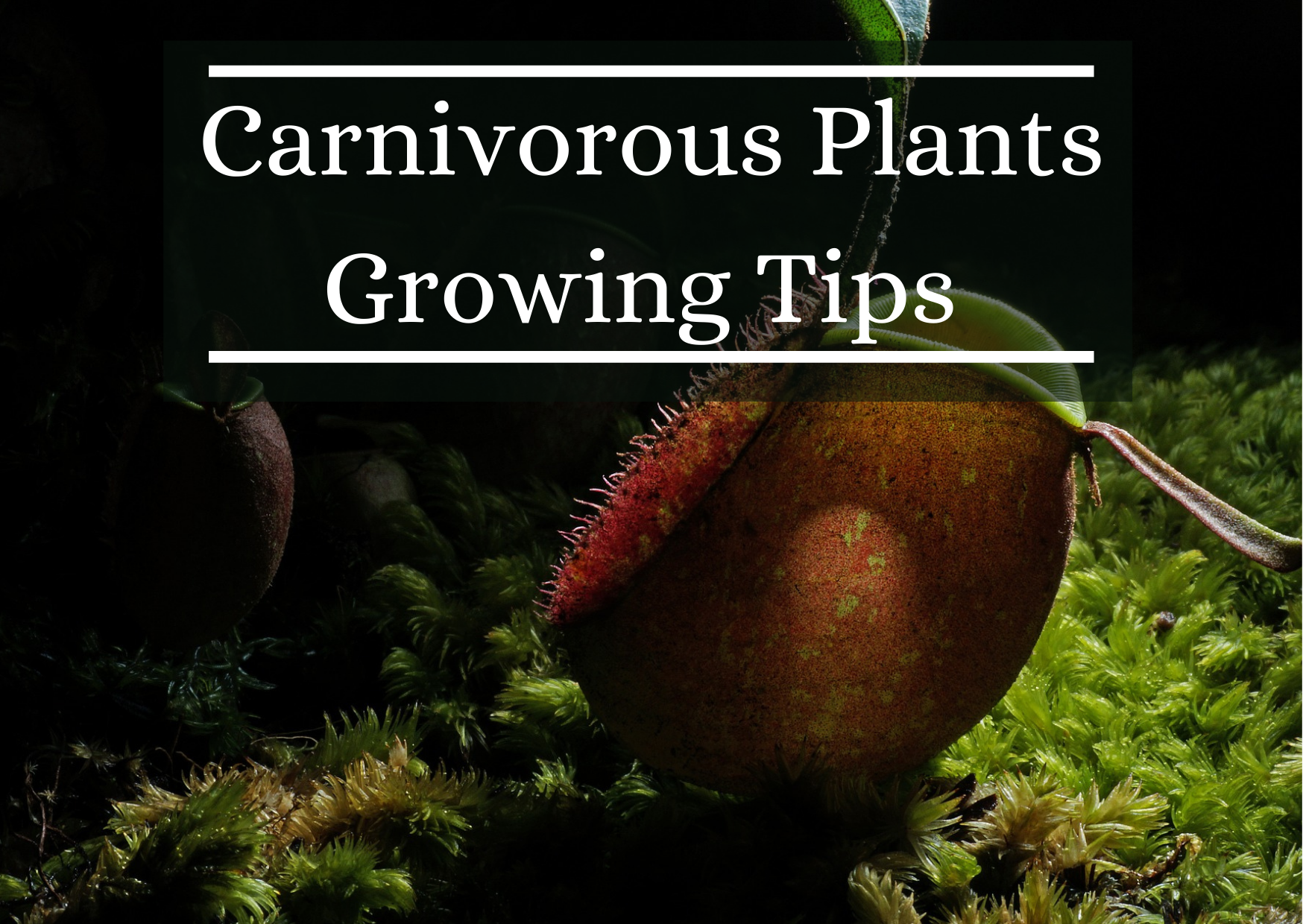Last Updated on August 9, 2022 by Real Men Sow
Carnivorous plants such as pitcher plants (Sarracenia), and Venus flytraps, (Dionaea muscipula), can be difficult to grow and are very popular with children. These plants are great for sunny windowsills or conservatories.
How To Grow Carnivorous Plants
Carnivorous plants thrive in soils that are boggy and rich in acidic or ‘ericaceous compost. Although most ericaceous compost is peat-based, there have been several peat-free ericaceous mix products on the market in recent times. Then, this compost should be kept well hydrated and not dry out. In summer, choose a sunny location to grow your carnivorous plants. Then, move to a cooler, frost-free area in winter. As necessary, remove any faded leaves and flowers.
6 Carnivorous Plants To Grow
Sundew (Drosera)
There are approximately 200 Sundew species. Each one is unique in its size, shape and growing requirements. Many are covered with tentacles that have glue-covered tips. Its tentacles move and help the Sundew quickly suffocate or digest any insects that have become stuck.
Monkey cups (Nepenthes)
Monkey cup plants are found in tropical regions like Sumatra, Borneo and Malaysia. Because monkeys can be seen drinking water from the monkey cup plant in rainforests, this carnivorous species is also known as a pitcher. A pitcher is a large enough size to hold up to a liter of water. Then, their cups passively capture and digest prey.
Bladderworts (Utricularia)
Bladderwort, a carnivorous type of plant, is named after its small bladders. It lives in open water and traps insects inside a bladder that acts like a suction lamp. There are tiny, hair-like feelers located at the bladder’s opening that detect when insects (such as fleas) land on it. This causes the bladder to burst, sucking in water and eating the animal.
Venus Flytrap (Dionaea muscipula)
The Venus flytrap, a carnivorous plant that eats mostly insects as well as arachnids, is probably the most well-known. The trap is a small plant that has four to seven leaves and grows from a short stem. It’s the pair terminal lobes hinged at their midribs that forms the trap. Then the plant can distinguish between living and non-living stimuli. The lobes can close in less than 0.1 seconds.
Lobster-pot plants (Darlingtonia californica)
The lobster pot was named after what it looks like, the lobster pot. It is a carnivorous herb that captures prey when it enters its trap. Prey becomes stuck and can’t find its way out. The trap has overlapping hairs that force prey to go down the leaf until they are eaten.
Catapulting flypaper trap (Drosera glanduligera)
This carnivorous species of plant has both snap-trapping (like Venus fly traps) and flypaper (like Butterworts). This carnivorous plant is native to Australia and catches its prey using sticky outer tentacles. Plant cells can break beneath the tentacles when the prey applies pressure to them and the object is catapulted towards the center of its host plant.
10 Notes to Remember When Growing a Carnivorous Plant
Grow carnivorous plants in sun
The best conditions for hardy carnivorous plants are those that have plenty of light and warmth in the spring and summer.
Keep carnivorous plants cool in winter
Carnivorous plants tend to be temperate, rather than tropical. They need to have a place to rest in winter to avoid becoming exhausted and dying. However, some plants will die as they go dormant. The Venus fly trap traps may also turn black and die. You can place the compost in a cool, dark area or in a greenhouse at around 7 degrees Celsius.
Grow carnivorous plants in moist compost
The wild hardy carnivorous plants that live in boggy soil need to be kept moist during the warmer months. Keep the water in a small container and top it up with more water. Also block drainage holes to prevent water from draining away. During winter, keep the compost moist.
Water carnivorous plants with rain water
Tap water can cause damage to carnivorous plant species. You should use distilled water or filtered water, water that has been boiled and left to cool, or rainwater. It is possible to leave a bucket out to collect the water or to use water from a butt.
Grow carnivorous plants in ericaceous compost
Carnivorous plants thrive in low-nutrient media, such as peat, or a specialty compost known as ericaceous. You can also use Moorland Gold, which is derived from peat bogs and is non-toxic.
Don’t feed carnivorous plants with insects
Do not feel that you must feed your carnivorous plants with insects. If it is outside, it will take to it on its own. Indoors, they should have access to insects.
Don’t fertilize carnivorous plants
You don’t need fertilizer for your carnivorous plant. They get all the nutrients from the insects they catch. The plants can actually be killed by fertilizer, as they are prone to thriving in poor soil.
Don’t tease carnivorous plants
Your Venus flytrap traps may not be closing properly if curious fingers have been poking at it too often. The average trap will close five times per lifetime. So, try not to provoke your plant.
Deadhead carnivorous plants
Use scissors to cut off dead flowers. In the case of pitcher plants and Venus flytraps, use scissors to remove dead traps that turn black. This is often done in autumn and winter.
Control pests on carnivorous plants
Greenfly is a problem for Carnivorous plants. Use traps and biological controls to get rid of them. Red spider mite can also be a problem for Carnivorous Plants. This parasite thrives in dry, hot conditions. You can improve the air circulation and humidity in your greenhouse by placing water bowls on the benches. But you could release the predatory mite Phytoseiulus Persimilis to your plants if you have a lot of plants.



